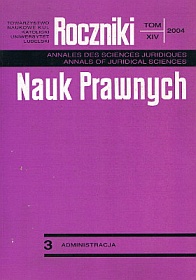The System of Internal Structure of Religious Fraternities in the Seventeenth and Eighteenth Centuries
Abstract
One of the basic issues in the research on the fraternities is their system and internal structure. This problem has not been dealt with as a separate issue up to now. If it had been sometimes addressed, it would have been treated as a supplementation in the context of other issues.
With regard to structure and internal organisation all fraternities were in principle similar, although there were at times differences between them. Sometimes they were small, more often however they were considerable and apparent. It all depended on the group to which a given fraternity belonged. The point was whether it was a devotional confraternity, or a member of charitable fraternities. In other words, this depended on the goals and tasks of a particular fraternity. The internal structure of fraternities was also influenced by the time of their establishment and the circumstances connected with their establishment.
Bering all this in his mind, the author reviews the structure and internal system of several types of fraternities popular in the seventeenth and eighteenth centuries. He does it on the basis of accessible sources, old prints, and respective literature. In his considerations, he analyses particular offices and functions that occurred in fraternities. He looks upon them in the light of several selected fraternities, such as e.g. rosary, scapular, and literary confraternities (they were all Marian confraternities), and some fraternities devoted to particular saints (e.g. St. Ursula). For matters of comparison, he takes into consideration also examples of structures that some fraternities had.
To sum up, the author notices that the structure of fraternity played an important role with regard to the vitality of fraternities, the form of their functioning, and their development.
Copyright (c) 2004 Roczniki Nauk Prawnych

This work is licensed under a Creative Commons Attribution-NonCommercial-NoDerivatives 4.0 International License.


